Unfortunately, tree felling accidents are quite common. Many can be avoided by following the Five Step Tree Felling Plan, outlined in University of Georgia Cooperative Extension Circular 1220. The Five Step Tree Felling Plan provides a systematic approach to felling that will help the saw operator avoid having the accidents outlined below.
A chainsaw should never, under any circumstances, be operated without personal protective equipment (PPE). The importance of PPE can never be overstated. Head, ear, eye, leg, and foot protection are mandatory. These items are covered in University of Georgia Cooperative Extension Circular 1148, Chainsaw Safety: Always Use Your Personal Protective Equipment (PPE). A good pair of gloves also is highly recommended.
Examine the chainsaw and make sure that the five essential safety features (Figure 1) are fully operational before attempting to use it. These features are the chain brake, throttle lock, right hand guard, chain catcher, and spark arrestor.
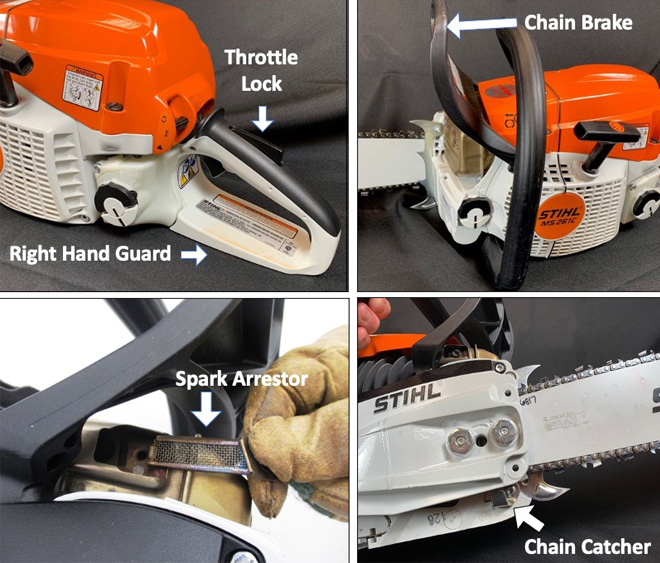
Figure 1. The five essential safety features on a chainsaw. If any of these features are broken or not functioning, do not use the saw.
- The chain brake stops the rotation of the chain. The chain brake can be engaged by pushing it forward with the left wrist. Any time more than two steps are taken, engage the chain brake. Engage the brake when the saw is set down. Never use the right hand to engage the chain brake. The chain brake also is engaged by the inertial forces generated by a kickback event.
- The throttle lock is designed to prevent accidental throttle advance and ensure that the operator has a firm grip as the saw is accelerating.
- The right hand guard and the chain catcher work together to protect the operator should the chain break or derail.
- Every chainsaw has the potential to start a wildfire. The spark arrestor will prevent sparks from leaving the muffler.
If any of these features is missing or broken, do not use the saw. Tag it out and take off the bar so nobody else uses it.
The tips below also will help a saw operator avoid these common accidents.
Kickback
Probably the most common cause of accidents is kickback. Kickback occurs when the top quarter of the saw blade, also known as the kickback zone, contacts a solid object such as wood or metal (Figure 2). Because the chain is coming around the tip of the saw bar in the kickback zone, the depth gauge on the cutter is lower than it should be in relation to the tooth (Figure 3). The saw literally bites off more than it can chew, stopping or slowing the chain. The result is a rotational force that flings the bar backward into the operator.
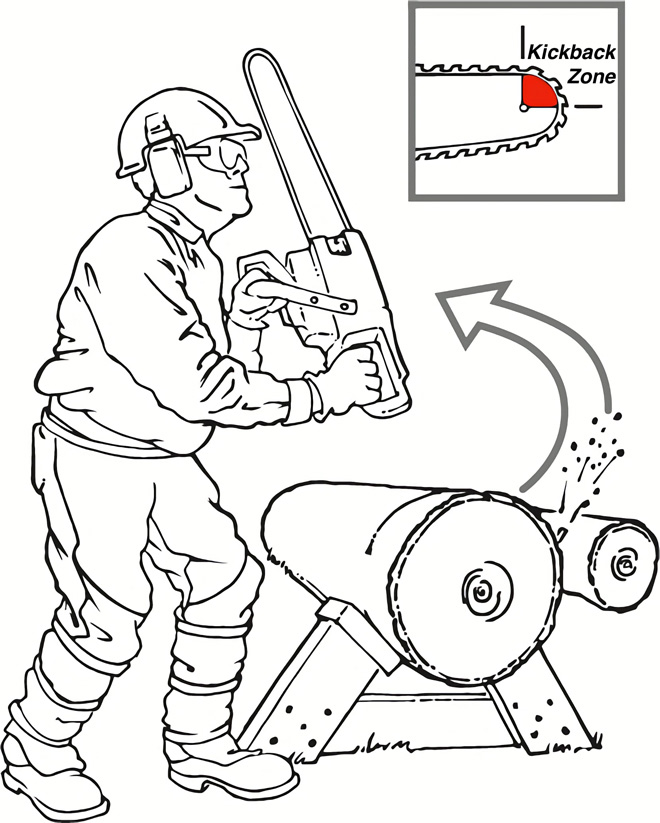
Figure 2. Kickback zone. Kickback occurs when the top quarter of the saw blade contacts a solid object (wood or metal). This area of the bar is called the kickback zone and should never be used by the operator.
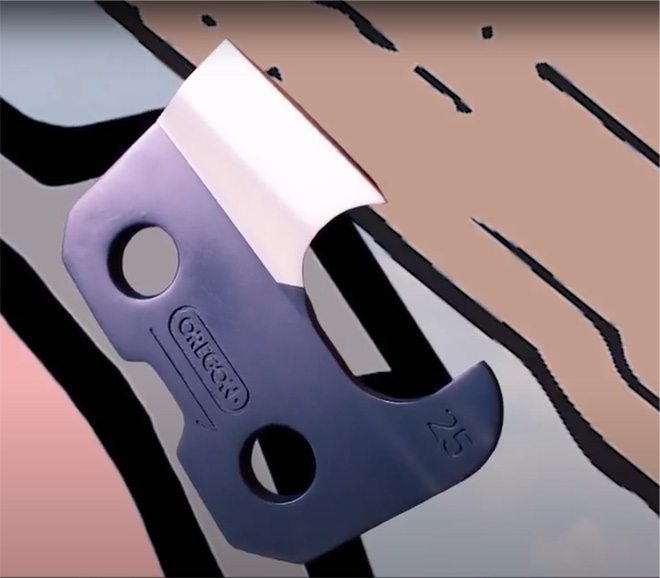
Figure 3. Kickback caused by the saw biting off more than it can chew. When the tooth is in the kickback zone, the depth gauge is lower than it should be in relation to the tooth. The saw cuts a relatively large piece of wood and the chain slows or stops. The force that was driving the chain flings the bar at the operator.
How to Prevent Kickback
- Make sure the saw has a fully functioning chain brake.
- Hold the saw with both hands, thumbs securely wrapped. Have one hand on the rear handle and the other on the front handle with the elbow locked straight.
- Ensure firm footing before starting the saw.
- Stand to the side of the cutting path of the chainsaw.
- Position your body so it is not near the bar and chain when the saw is running.
- Know where the bar tip is at all times. Do not let it touch logs, branches, or the ground when the saw is running.
- Cut only one piece of wood at a time, never two branches at once.
- Run the saw at full power when cutting to help prevent pinch kickback.
- Use a wedge to keep cuts open while sawing.
Barber Chair
Barber chair occurs when the force pulling forward on the trunk is great enough to split the trunk but not great enough to trigger the hinge to fold. It often is caused by heavy, front-leaning trees. It also can occur by applying too much force to a rope while pulling the tree over when using mechanical advantage.
The bottom of the tree goes up and the top comes down—like a barber’s chair, feet up, head down (Figure 5). Saw operators can be struck by the trunk as it swings up or crushed as it falls.
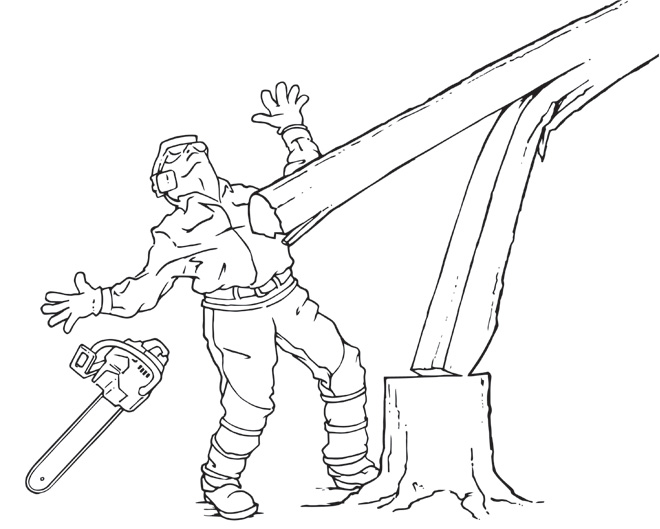
Figure 5. A barber chair occurs when the force pulling forward on the trunk is great enough to split the trunk but not enough to trigger the hinge to fold.
How to Prevent Being Struck by a Barber Chair
- Work through the Five Step Tree Felling Plan (Kohlich et al., 2020) to avoid barber chair. Identify lean and any hazards which might increase the probability of barber chair (e.g., cracks). Have the escape route planned in advance. It should be away from the tree at a 45° angle from the direction of tree fall. Make sure the escape route is cleared.
- Change the direction of felling to avoid excessive forward lean.
- Take care with the felling cuts and, regardless of the type of notch used, correct any undercutting or bypassing before making the back cut or bore cut.
- Make sure the chain is sharp and the saw is running properly. This will decrease the time the wood is under tension.
- An open-faced notch, followed by a bore cut through the tree to create the hinge, reduces the chance of getting hurt by a barber chair (Figure 6). Using this technique, tree fibers in the trunk are less likely to be pulled to the breaking point. Other techniques require the operator to be standing at the tree, sawing through more of the hinge as the tree begins its fall. This puts the operator in a very dangerous position right behind the tree should a barber chair happen.
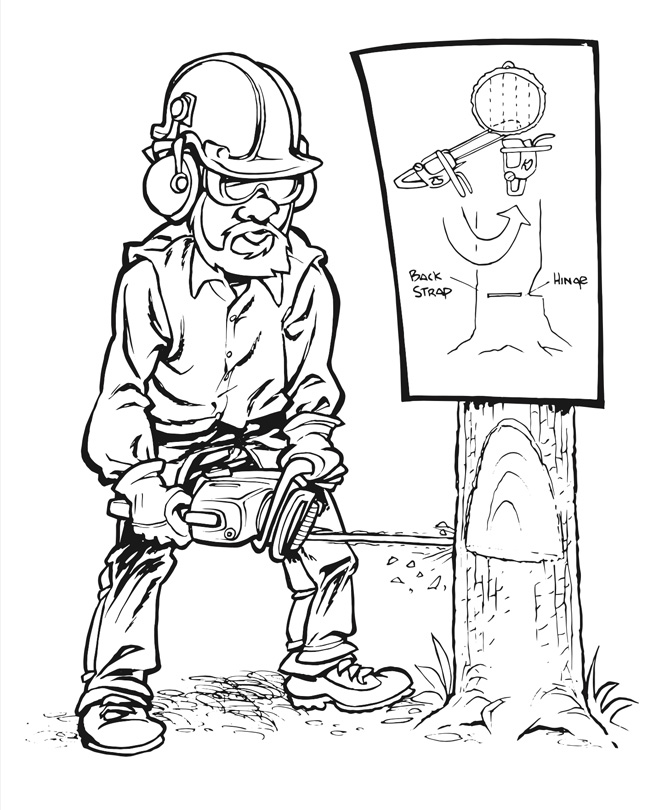
Figure 6. Preventing barber chair. To reduce the chance that a barber chair will occur, use an open-faced notch, followed by a bore cut through the tree to create the hinge. This places less force on the longitudinal fibers in the tree.
Entanglement
Entanglement occurs when a tree being felled is tangled in vines, strikes branches or hits the trunk of another tree (Figure 7). It changes the direction of fall or hangs up the tree, leaving a dangerous overhead hazard.
Once a tree is hung up in another tree, the options available depend on the location. The best option in a forest is to leave the tree and let time take it down. In an urban area, the best option is to pull it out with ropes. In storms, trees may become entangled in utility lines. In this case, do nothing. Contact an experienced tree company. They will wait for the utility company to arrive and declare the situation safe before attempting to free the tree.
How to Prevent Entanglement
- Work through the Five Step Tree Felling Plan (Kohlich et al., 2020) to avoid entanglement.
- Before picking up the saw, identify the height of the tree, the hazards around the tree, and any lean the tree has.
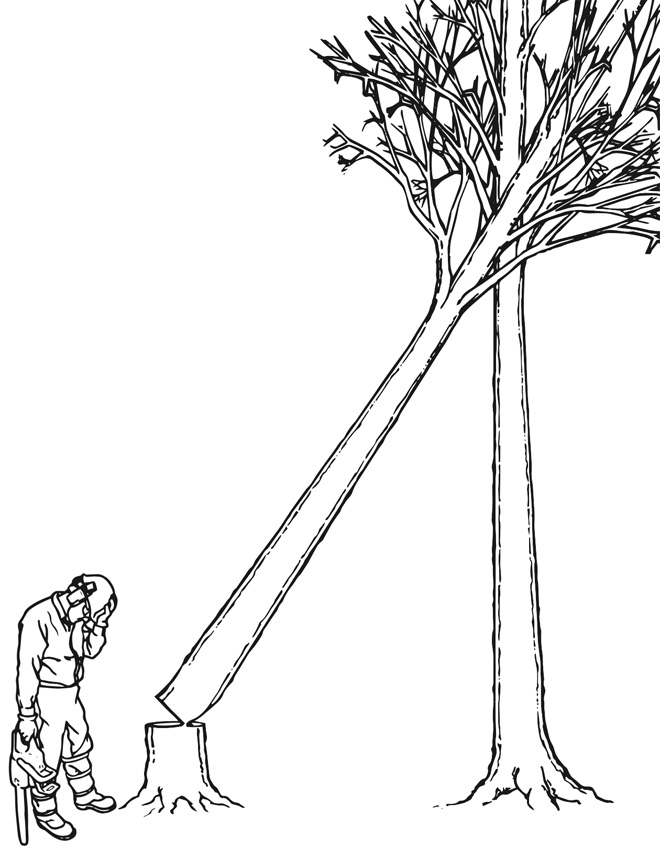
Figure 7. Entanglement occurs when a tree being felled strikes branches or the trunk of another tree and the tree hangs up, not falling to the ground.
Setback
Setback (Figure 8) occurs when the tree sets back onto the saw blade during the bore cut or back cut, pinching the chainsaw. In extreme cases the tree may fall back onto the feller. Setback occurs when a tree has back lean.
How to Prevent Setback
- Work through the Five Step Tree Felling Plan (Kohlich et al., 2020) to avoid setback. Identify lean prior to making any cuts.
- Put a wedge in any tree you are felling; this is good practice and will help prevent setback.
- Use rope(s) as needed.
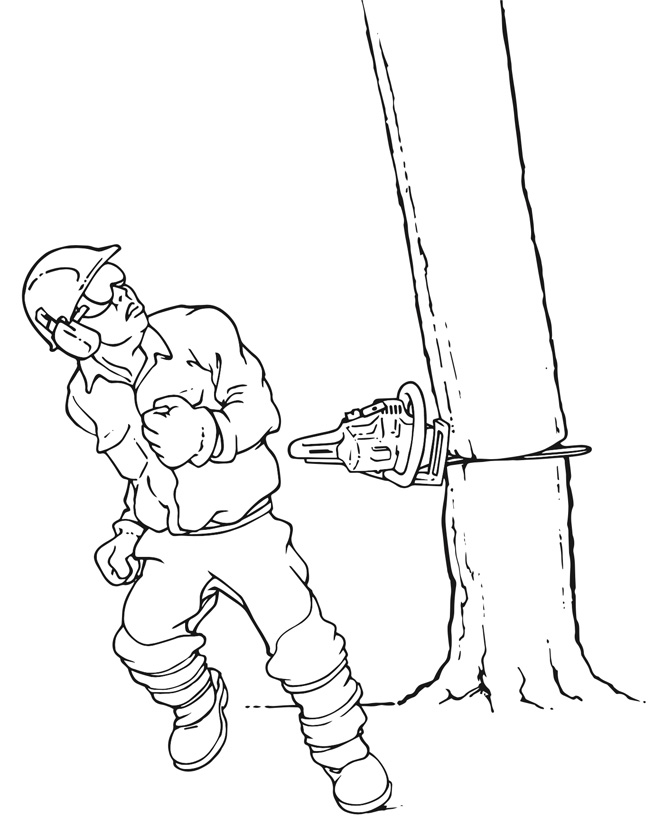
Figure 8. Setback occurs when the tree sets back during the bore cut or back cut, pinching the chainsaw.
Stump Jump
Stump jump occurs when the hinge fails and the tree detaches from the stump (Figure 9). At this point the tree is in free fall and completely out of control. The tree can jump onto the saw operator, or the tree trunk can strike the operator.
How to Prevent Stump Jump
Using an open-faced notch (70–90°) and bore cut will make this accident much less likely (Figure 6).
Do not use a deep notch with an angle less than 45°, or a back cut that is too high.
Work through the Five Step Tree Felling Plan (Kohlich et al., 2020) to avoid stump jump. The escape route should be identified and cleared prior to cutting. When the tree begins to move, workers should be moving along the escape route and away from the falling tree.
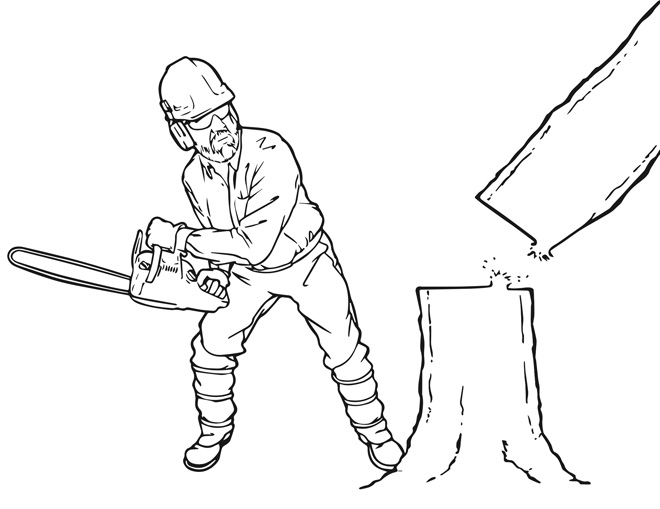
Figure 9. Stump jump occurs when the hinge fails and the tree detaches from the stump. The saw operator has no control over the tree once it jumps and it can strike anywhere.
Spring Pole
Wood under tension always is dangerous. A relatively small branch or trunk can cause great damage (Figure 10). A spring pole is when a tree or branch is under great tension and the chainsaw operator cuts into the wood, resulting in a violent release of energy. The operator may be struck by the trunk, limb, or chainsaw. This generally occurs during limbing and bucking, but not exclusively. It can also occur up in the canopy with storm damage.
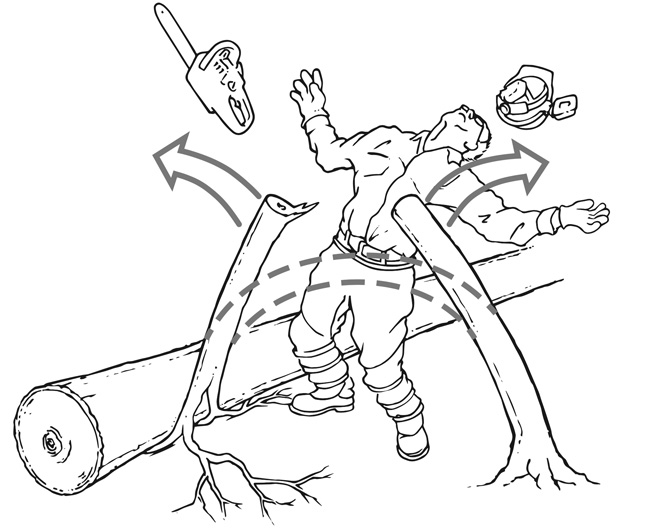
Figure 10. Spring pole can happen when a tree or branch is under great tension as the chainsaw operator cuts into the wood.
How to Prevent Spring Pole Strikes
- Identify the compression and tension side of the wood. Never cut on the tension side.
- Look for the point of maximum tension. Mentally draw a line along the trunk of the tree and a line at a right angle from the top of the bow to the trunk line, and bisect those lines with another line at a 45° angle. That is the point of maximum tension (Figure 11).
- Use the accordion cut (Figure 12), a series of small relief cuts made on the compression side of the tree opposite from the point of maximum tension. T his will release the tension.
- Use the shave cut (Figure 13), which also will release the tension. This also is made at the point of maximum tension on the compression side. One layer at a time is shaved off until the branch relaxes, releasing all tension.
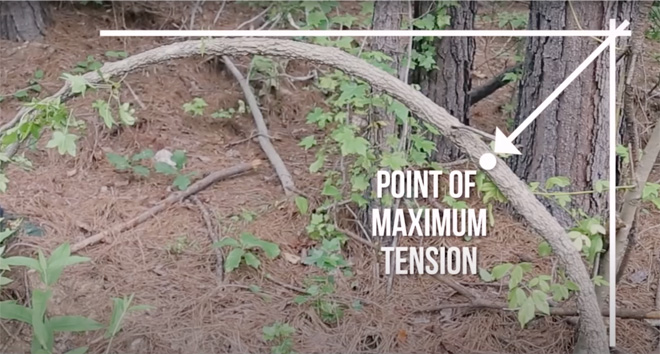
Figure 11. Identifying the point of maximum tension. Before cutting a spring pole, identify the point of maximum tension. Draw a line along the trunk of the tree and a line at a right angle from the top of the bow to the trunk line, then bisect those lines with another line at a 45° angle. That is the point of maximum tension.
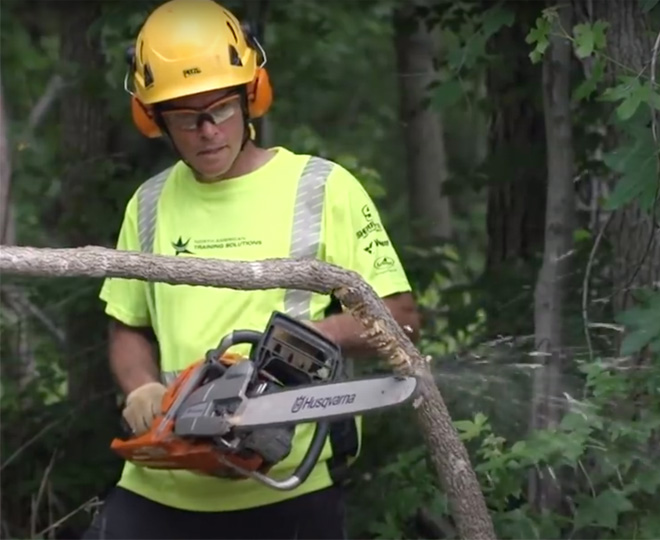
Figure 12. Making an accordion cut. Use a series of small cuts on the compression side at the point of maximum tension to release a spring pole.
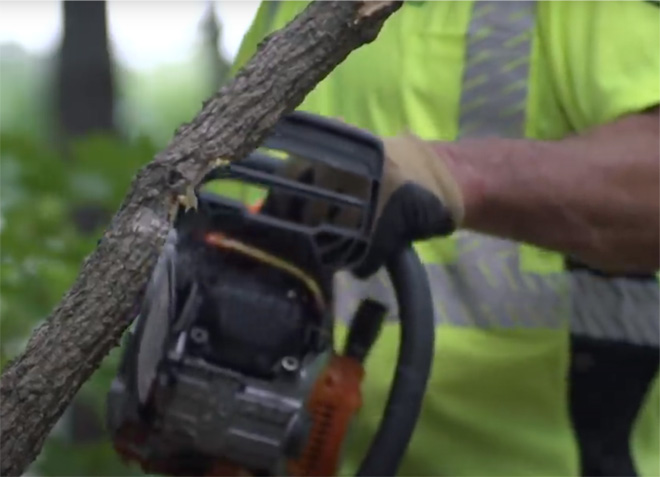
Figure 13. Shave cuts to release tension. A series of shave cuts on the compression side at the point of maximum tension also will safely release a spring pole.
These are just a few of the most common accidents that can occur when felling a tree. All but two (kickback and spring poles) can be prevented by rigorous application of the Five Step Tree Felling Plan. Never underestimate the value of a systematic approach to tree felling or the value of training and education. A keen awareness of the surroundings also is invaluable.
References
Bauske, E. M., Hutcheson, W., & Orellana, R. (2018). Chainsaw safety: Always use your personal protective equipment (Publication No. C 1148). University of Georgia Cooperative Extension. https://extension.uga.edu/publications/detail.html?number=C1148
Kolich, H. N., Bauske, E. M., Kelley, P., Orellana, R., & Martinez-Expinoza, A. (2020). Chainsaw safety: The five step tree felling plan (Publication No. C 1220). University of Georgia Cooperative Extension. https://extension.uga.edu/publications/detail.html?number=C1220
Status and Revision History
Published on Nov 15, 2022


























































